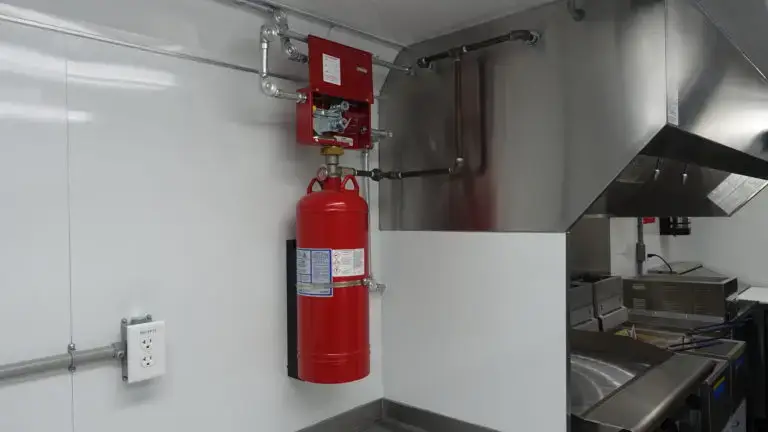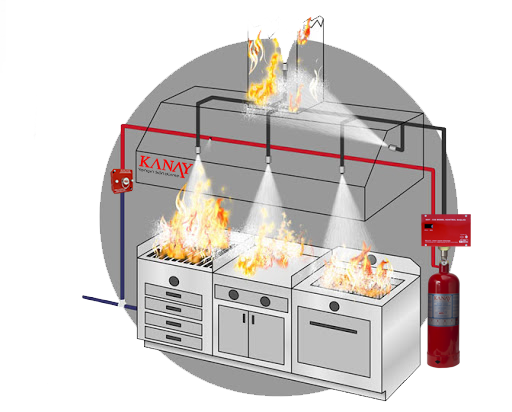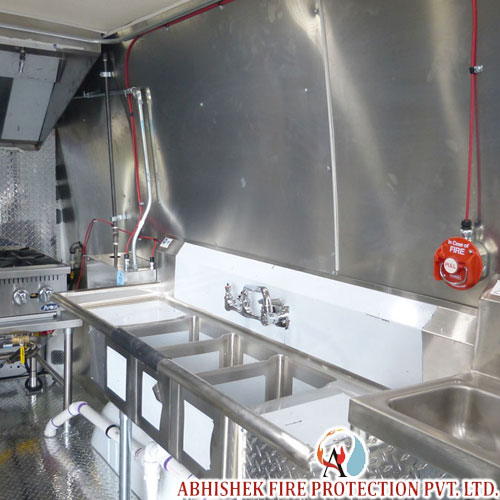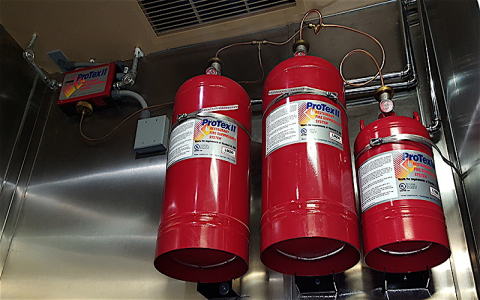Food Truck Fire Suppression Systems For Sale | Full Kits
Food Truck Fire Suppression Systems For Sale | Full Kits
Running a food truck means you’re constantly juggling multiple tasks – from crafting delicious meals to managing customer flow. But one aspect you can’t afford to overlook is fire safety. A comprehensive fire suppression system isn’t just a regulatory requirement; it’s your first line of defense against a catastrophic event that could destroy your business. If you’re searching for “food truck fire suppression systems for sale“, you’ve come to the right place. We’ll break down everything you need to know about selecting and maintaining the right full kit for your mobile kitchen, ensuring you meet safety standards while protecting your livelihood.
Why Your Food Truck Deserves the Best Fire Protection
The compact nature of food trucks creates a perfect storm for fire hazards. High-temperature cooking equipment, flammable cooking oils, and limited space significantly increase fire risks compared to traditional restaurants. According to the National Fire Protection Association (NFPA), cooking equipment is the leading cause of restaurant fires, responsible for approximately 61% of property damage. In the confined space of a food truck, a small flare-up can become a major emergency in seconds.

Investing in a quality fire suppression system does more than just extinguish flames. It:
- Protects your significant investment in equipment and inventory
- Ensures the safety of you, your staff, and your customers
- Helps you comply with local fire codes and insurance requirements
- Prevents costly downtime and business interruption
Key Components of a Complete Food Truck Fire Suppression Kit
When browsing food truck fire suppression systems for sale, you’ll encounter various options. Understanding what makes up a complete system will help you make an informed decision. A typical full kit includes several essential components working together to provide comprehensive protection.
The heart of any system is the suppression agent tank, usually filled with a wet chemical specifically designed for commercial kitchen fires. This specialized agent quickly knocks down flames and creates a foam blanket that prevents re-ignition. The system also includes strategically placed nozzles above all cooking equipment, heat sensors that trigger automatic activation, and a manual pull station for emergency intervention.
Don’t forget about the peripheral components that complete your safety setup. Your kit should include an automatic gas shut-off device that cuts fuel supply when the system activates, appropriate fire extinguishers for different fire classes, and clear installation instructions. Some premium kits even come with maintenance checklists and compliance documentation to simplify your safety inspections.
Comparing Top Fire Suppression System Brands
Not all fire suppression systems are created equal. As someone who’s reviewed truck equipment for over a decade, I’ve tested numerous brands in real-world conditions. Here’s how the leading options stack up for food truck applications:
| Brand | Coverage Area | Agent Type | Special Features | Best For |
|---|---|---|---|---|
| Ansul | Small to large setups | Wet chemical | UL 300 compliant, easy maintenance | Heavy-duty cooking operations |
| Amerex | Compact spaces | Wet chemical | Space-efficient design | Small to medium food trucks |
| Kidde | Standard kitchens | Wet chemical | Budget-friendly option | Startups and seasonal operations |
Each brand offers distinct advantages depending on your specific cooking setup and budget. The Ansul systems, for instance, often come recommended by fire safety professionals with specialized certifications in commercial kitchen protection. Their systems consistently deliver reliable performance even in demanding food truck environments with multiple cooking stations.
Installation and Maintenance Best Practices
Proper installation is crucial for your fire suppression system to function correctly when needed. While some food truck owners attempt DIY installation to save money, I strongly recommend professional installation by certified technicians. They understand the precise nozzle placement, pipe routing, and trigger mechanism setup required for optimal performance.

Regular maintenance ensures your system remains ready for action. The U.S. Fire Administration recommends monthly visual inspections and professional servicing every six months. Create a simple maintenance schedule that includes checking pressure gauges, inspecting nozzles for blockages, testing manual activation, and verifying gas shut-off functionality. Keep detailed records of all maintenance activities – this not only ensures safety but also simplifies insurance renewals and health inspections.
Cost Considerations and Value Analysis
When evaluating food truck fire suppression systems for sale, you’ll find prices ranging from $1,500 to $4,000 for complete kits. While this represents a significant investment, consider it against the potential cost of a fire incident. The average property damage from a restaurant fire exceeds $20,000, not accounting for business interruption losses.
Factor in ongoing costs like semi-annual professional maintenance (typically $150-$300 per service) and potential recharging fees if the system activates. Many insurance providers offer premium discounts for food trucks with professionally installed and maintained suppression systems, which can offset some of these costs over time.
Frequently Asked Questions
How often should I have my food truck fire suppression system inspected?
NFPA standard 96 requires commercial kitchen suppression systems to be inspected every six months by qualified personnel. Additionally, perform visual checks before each operating day to ensure nothing is obstructing the nozzles and that pressure gauges show adequate charge.
Can I use a regular fire extinguisher instead of a specialized suppression system?
While having appropriate fire extinguishers is important, they cannot replace an automatic suppression system. Extinguishers require someone to operate them, while suppression systems activate automatically, providing critical protection when you might be distracted or unable to respond immediately.

What’s the typical lifespan of a food truck fire suppression system?
With proper maintenance, the mechanical components can last 10-15 years. The suppression agent typically needs replacement every 5-7 years, or immediately after activation. Regular professional inspections will help you determine when components need replacement.
Are there specific regulations for food truck fire suppression systems?
Requirements vary by location, but most jurisdictions follow NFPA standards. Your local fire marshal can provide specific regulations for your area. Typically, systems must be UL 300 compliant and installed by licensed professionals.
Sources and Further Reading
For additional information on food truck fire safety standards and best practices, consult these authoritative resources:
- National Fire Protection Association – NFPA 96 standard for ventilation control and fire protection of commercial cooking operations
- U.S. Fire Administration – Commercial kitchen fire safety guidelines and statistical data
- UL Solutions – UL 300 fire testing and compliance standards for fire suppression systems








